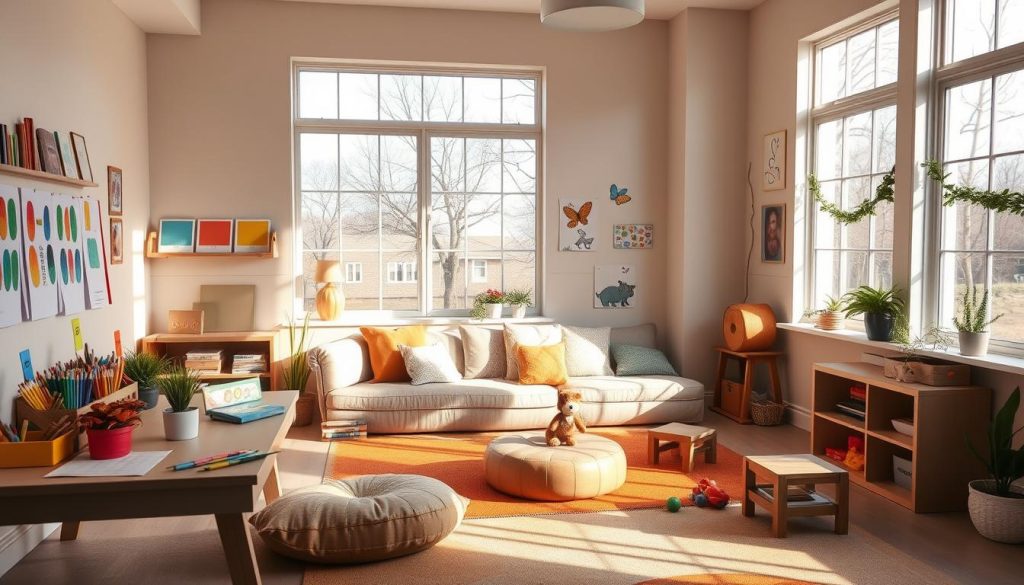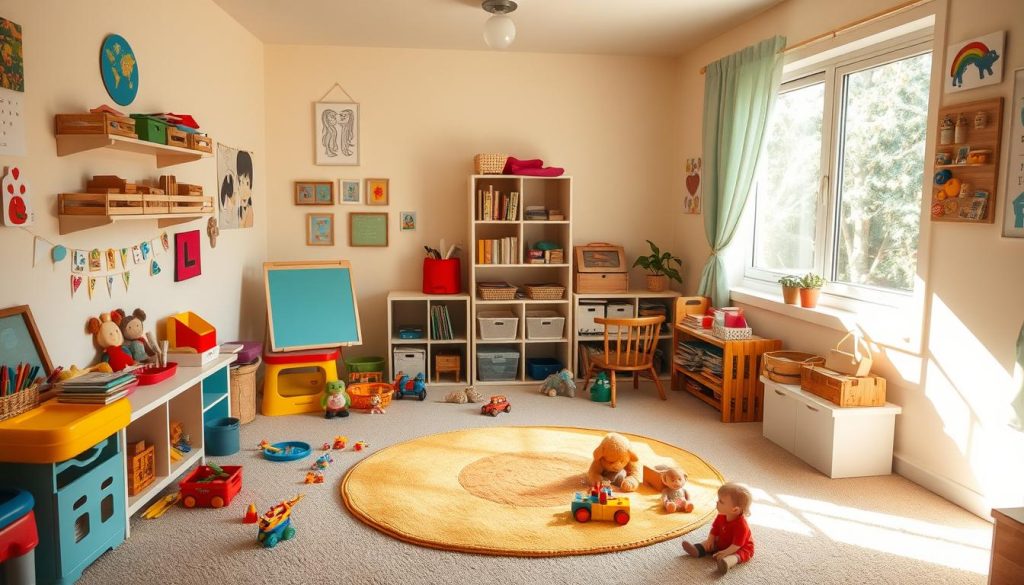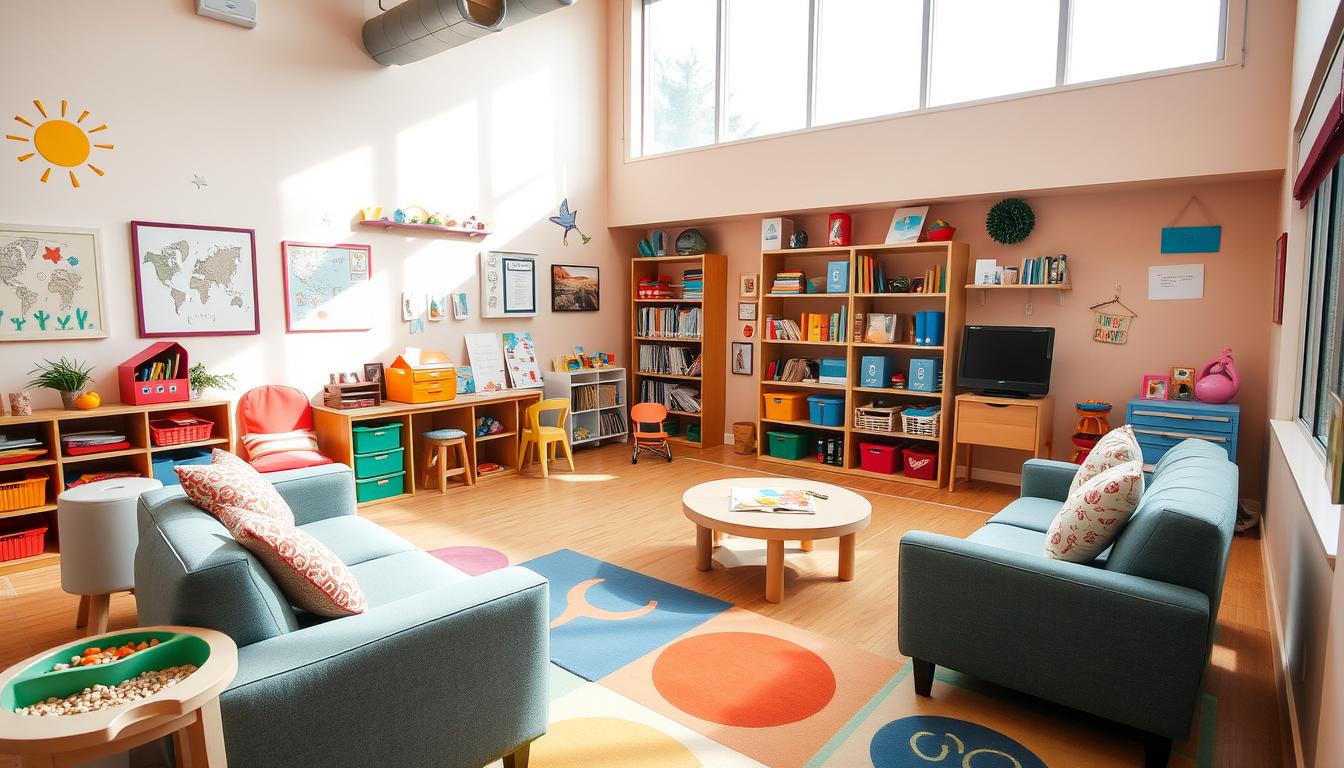Ever thought about how much therapy can change a child’s life? With over 7.4 million kids in the U.S. facing mental health issues, finding the right therapy is key. Therapies like behavioral and cognitive help kids deal with mental, developmental, or behavioral problems.
Therapy is vital for kids. It meets their specific needs and considers their family and issues. With costs and quality varying, parents need to know their options. Mental health experts push for specific treatments, making it important to learn about these techniques.
Online services like Talkspace, TeenCounseling, and Amwell are making therapy more accessible. They offer a range of services and prices, giving parents more choices.
Key Takeaways
- Different children benefit from different types of therapy, requiring tailored approaches.
- Behavior therapy and cognitive-behavioral therapy (CBT) are proven to be particularly effective for common childhood conditions.
- Online therapy platforms, such as Talkspace and TeenCounseling, expand access to quality mental health services.
- Understanding child therapy costs and service quality is critical for making informed decisions.
- Therapy options like play therapy, animal-assisted therapy, and art therapy provide additional benefits.
- Expert-recommended therapy can support healthy mental development into adulthood.
Understanding the Need for Therapy
In the United States, one in five children face mental, developmental, or behavioral disorders. Yet, many don’t get the help they need. Therapy is key in tackling these issues in kids. It helps them deal with problems at home, school, or with friends.
Therapies like behavior and cognitive behavioral therapy are designed for each child’s needs. For example, tackling anxiety in kids requires a deep understanding of their struggles. Starting therapy early is crucial for better long-term results.

Parents are often a big part of therapy. They might join therapy sessions or use strategies at home. This is especially important for issues like sibling rivalry or behavioral problems. It helps create a supportive and understanding environment.
Spotting and treating mental health issues early can greatly help. It can lead to healthier families and better relationships.
Common Types of Therapy for Kids
It’s key to know the different therapies for kids to help them grow well and feel better mentally. With a 40% rise in mental health issues among kids before the pandemic, finding the right therapy is crucial. We’ll look at two main types: Behavior Therapy and Cognitive Behavioral Therapy (CBT).
Behavior Therapy
Behavior therapy believes that all behaviors can be learned and changed. It focuses on encouraging good behaviors and reducing bad ones. Techniques like training parents in managing behavior are very important.
For example, it’s often used for ADHD, which affects many kids. Since 8.9% of children have behavioral problems, this therapy helps teach discipline and manage symptoms.
Cognitive Behavioral Therapy (CBT)
Cognitive Behavioral Therapy (CBT) aims to change negative thinking and behaviors. It helps kids understand and control their thoughts and feelings, leading to better emotional health. This is especially helpful since 4.4% of kids have depression and 9.4% have anxiety.
CBT is based on controlling reactions to thoughts and feelings, which helps reduce symptoms. Through these techniques, kids can deal with ADHD, depression, and PTSD.

Play Therapy and Its Benefits
Play therapy is a key part of child therapy techniques. It lets mental health experts connect with kids in a natural and comforting way. Through play, kids can share and work through their feelings more easily.

Child-Centered Play Therapy (CCPT)
Child-Centered Play Therapy (CCPT) is a special form of play therapy. It focuses on creating a safe space for kids. Kids use toys and play areas to help themselves heal.
This method is great for kids with anxiety, ADHD, or trauma. Carl Rogers introduced Nondirective PT in 1951. This was a big step in making CCPT a key part of therapy for kids.
General Play Therapy
General play therapy uses many creative play tools. These include drawings, puppets, costumes, and board games. These tools help find and fix patterns in a child’s behavior.
Play Therapy International says up to 71 percent of kids see positive changes. This shows how well these child therapy techniques work. Play therapy also helps adults with intellectual disabilities and trauma.
In summary, both Child-Centered Play Therapy (CCPT) and general play therapy are very helpful. They help kids grow and feel better. Mental health experts use these methods to support kids in many ways.
Parent-Child Interaction Therapy (PCIT)
Parent-Child Interaction Therapy (PCIT) is an evidence-based approach to improve parent-child relationships. It helps manage child behavior issues through real-time coaching. Mental health professionals teach parents skills to handle their child’s behavior better.
PCIT usually lasts from 12-20 sessions. It’s not strictly time-limited, giving flexibility for individual progress.
PCIT has two phases. The first phase focuses on increasing attachment and positive interactions. It aims to reduce tantrums and negative behaviors, making children feel more secure.
The second phase enhances limit-setting and compliance. It decreases aggression and defiance. This leads to better behavior in public and calmer parents during discipline.
PCIT’s core principles match gentle parenting, promoting positive interactions. Parents get coaching from a play therapist through a bug-in-the-ear device. This feedback helps parents use effective strategies right away, creating a more harmonious home.
PCIT helps parents manage their child’s behavior, making children feel calm and secure. Using these techniques can improve attention span and pro-social behaviors. But, it’s important to talk to a mental health professional before starting.
When considering PCIT, think about the availability of therapists and its cost. The benefits, like reduced behavioral issues and stronger bonds, can be worth it for the long term.
Using PCIT with parenting tips can greatly improve family relationships and child behavior. Studies show PCIT’s positive outcomes, making it a valuable tool for addressing child behavior disorders and promoting emotional well-being.
Specialized Therapies: Animal-Assisted and Art Therapy
Specialized child therapy options like animal-assisted therapy and art therapy offer unique benefits. They provide alternative ways for children to express themselves and manage their conditions. These therapies are great for kids with specific needs or preferences.
Animal-Assisted Therapy
Animal-assisted therapy (AAT) is popular for kids with Autism Spectrum Disorder (ASD). Therapy animals, especially dogs, help reduce stress and make connections smoother. They improve communication and social behaviors.
Being around therapy animals can also decrease autistic traits and increase focus. Dogs help lower pain and distress in kids during hospital stays and medical procedures. AAT boosts self-esteem in kids with ADHD and reduces anxiety and fear before medical treatments.

Art Therapy
Art therapy for kids is a unique way for them to express their feelings and experiences. It’s a safe space for kids to explore their emotions when words fail. Through art, kids can deal with issues like eating disorders or social media safety concerns.
Art therapy helps with emotional regulation and improves cognitive and sensorimotor functions. It shows that there’s no one-size-fits-all approach in child therapy. Options like animal-assisted therapy and art therapy are very effective for kids’ mental health and well-being.
Parenting Challenges and Therapy Selection
Choosing the right therapy for your child is key when facing parenting challenges. Issues like divorce, remarriage, and stepchild relationships play a big role. Knowing what your child struggles with, like anxiety or depression, helps pick the right help.
Places like Beech Acres Parenting Center offer great support. They use Natural Strength Parenting™ to focus on your child’s strengths. The VIA Character Strengths Survey helps identify 24 strengths across six categories. This approach strengthens your family.
Therapy groups meet for 1 1/2 hours weekly for eight weeks. They help parents of kids at all ages. Topics include managing relationships, academic stress, and understanding child behavior.
Online family therapy is a convenient option. It’s great for those with busy schedules or who live far from services. It lets you stay involved in your child’s therapy easily.
Mindful parenting is also encouraged. Just 5 minutes of play a day can improve your bond with your child. Focusing on your family’s strengths makes therapy more effective and personal.
Conclusion
Child therapy offers a wide range of options, each designed for a child’s unique needs. It helps with issues like eating disorders and too much screen time. It also supports eco-friendly parenting.
Getting professional help is key in this journey. The aim is to give every child a great start in life. The U.S. Department of Health and Human Services and the U.S. Department of Education stress the importance of family involvement.
They say that when parents are involved, kids are less likely to get depressed. This is especially true during the tough teenage years. Family and social pressures can be overwhelming.
Children’s minds and feelings are closely linked. Kids who have supportive parents are less likely to face mental health problems. On the other hand, negative parenting can harm a child’s mental state.
Studies by Panter-Brick (2014) and Sheridan et al. (2010) show how crucial parental involvement is. It leads to better outcomes for children.
Knowing about childhood disorders and when to seek help is vital. Parents need to manage their mental health and use eco-friendly practices. They should also talk openly with their family.
By setting a routine and joining support groups, parents can lower their stress. This helps them and their kids. This approach is key to raising empathetic and well-adjusted children.
FAQ
What are the most common types of therapy for kids?
Why is therapy important for children?
How does Behavior Therapy work for kids?
What is Cognitive Behavioral Therapy (CBT) and how does it benefit children?
What is Child-Centered Play Therapy (CCPT)?
How does General Play Therapy help children?
What is Parent-Child Interaction Therapy (PCIT) and how does it work?
What are the benefits of Animal-Assisted Therapy for kids?
How does Art Therapy support children’s mental health?
How can parents choose the right type of therapy for their child?
What are some parenting challenges that therapy can address?
Are there online therapy options available for families?
This post contains affiliate links. If you click on a link and make a purchase, I may earn a small commission — at no extra cost to you. Thank you for supporting this blog and helping me keep the patterns free! Read the full Affiliate Disclosure & Transparency.
